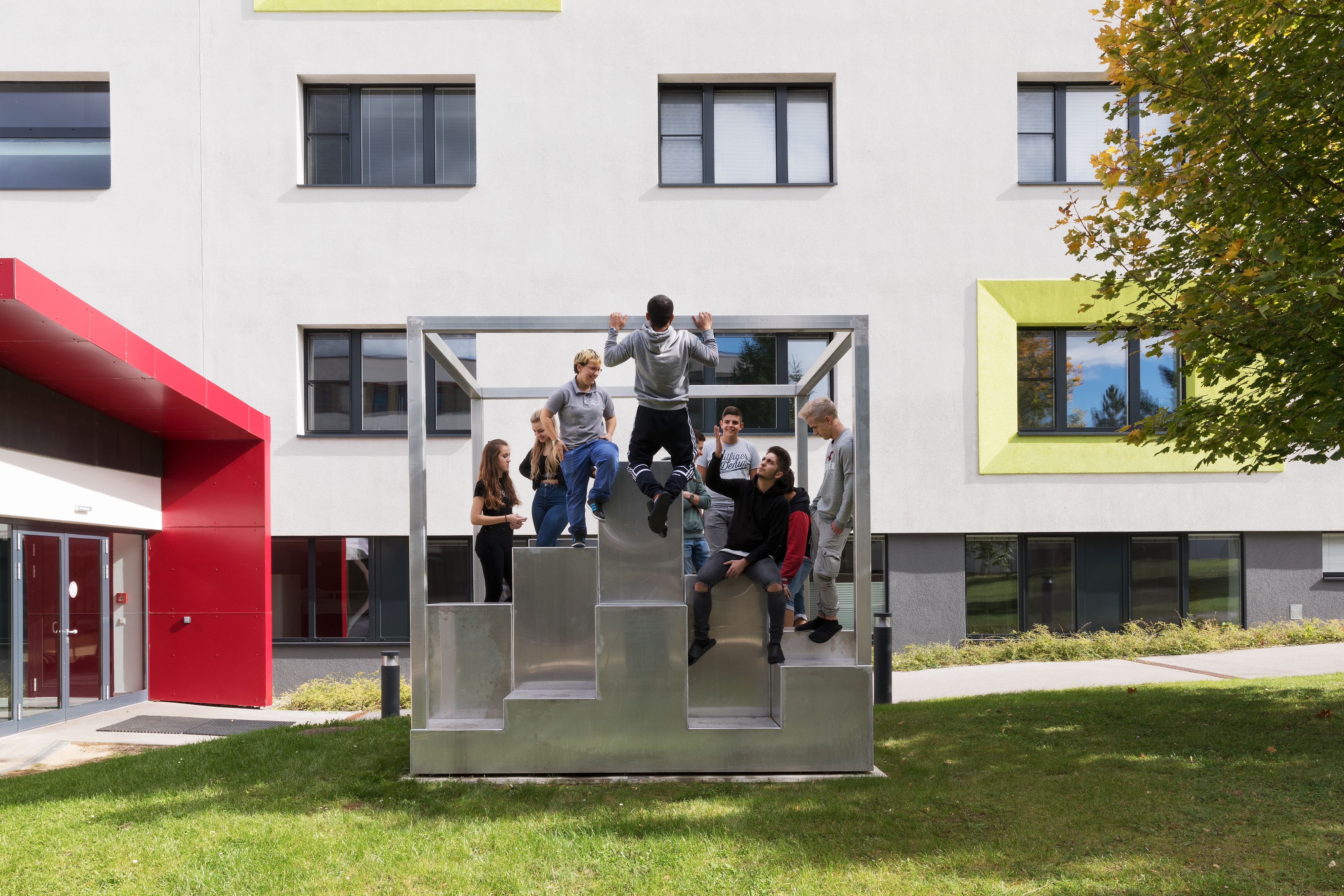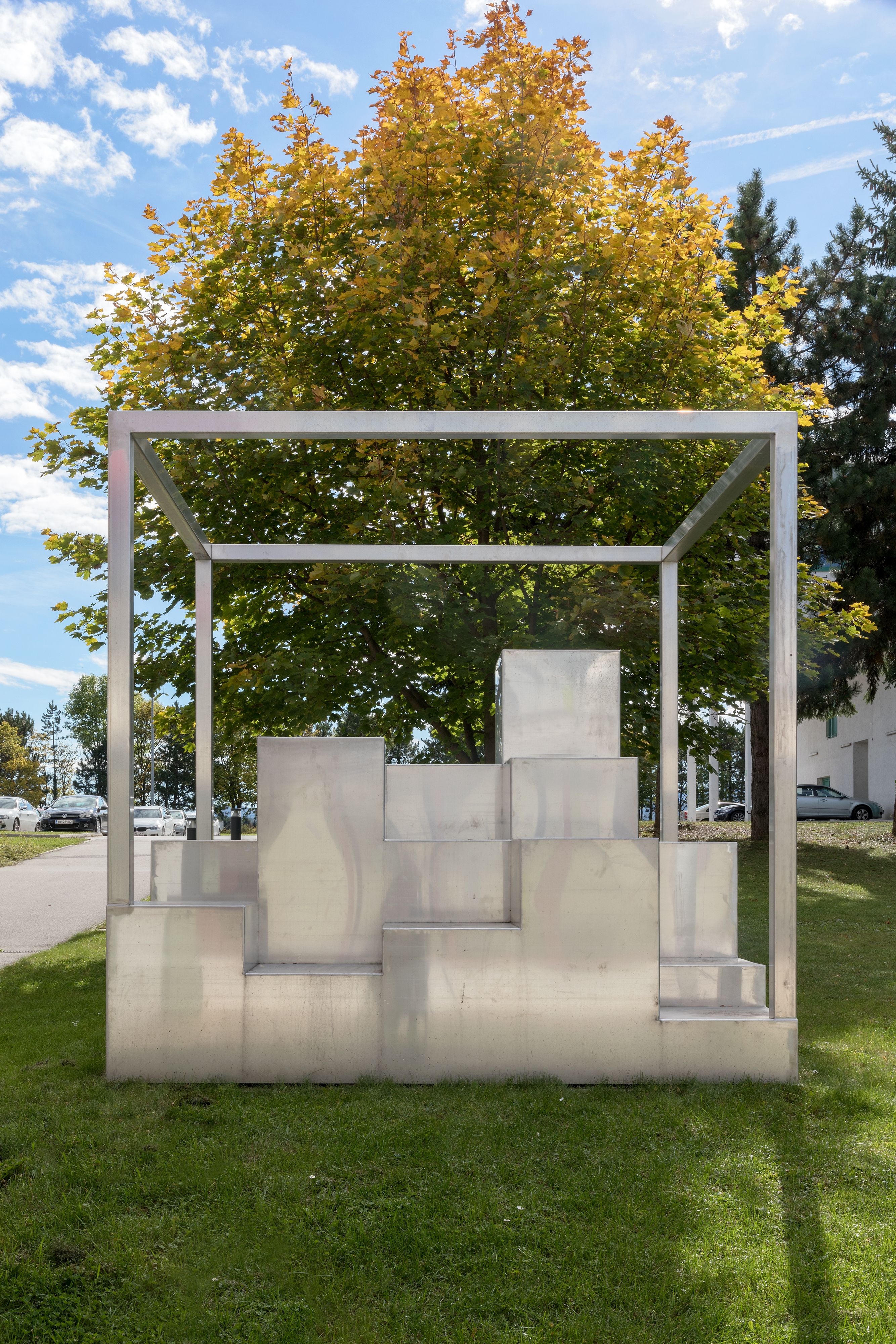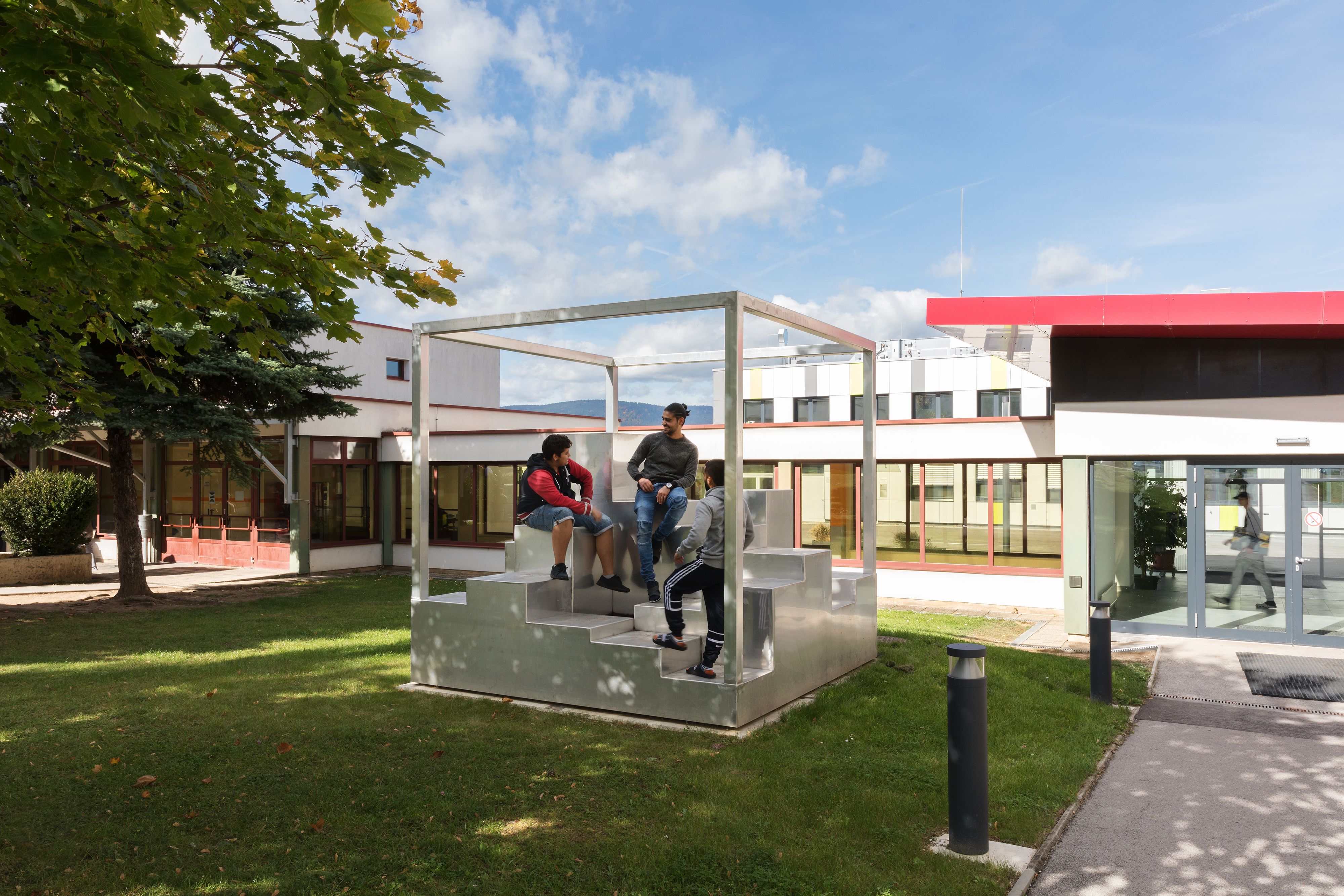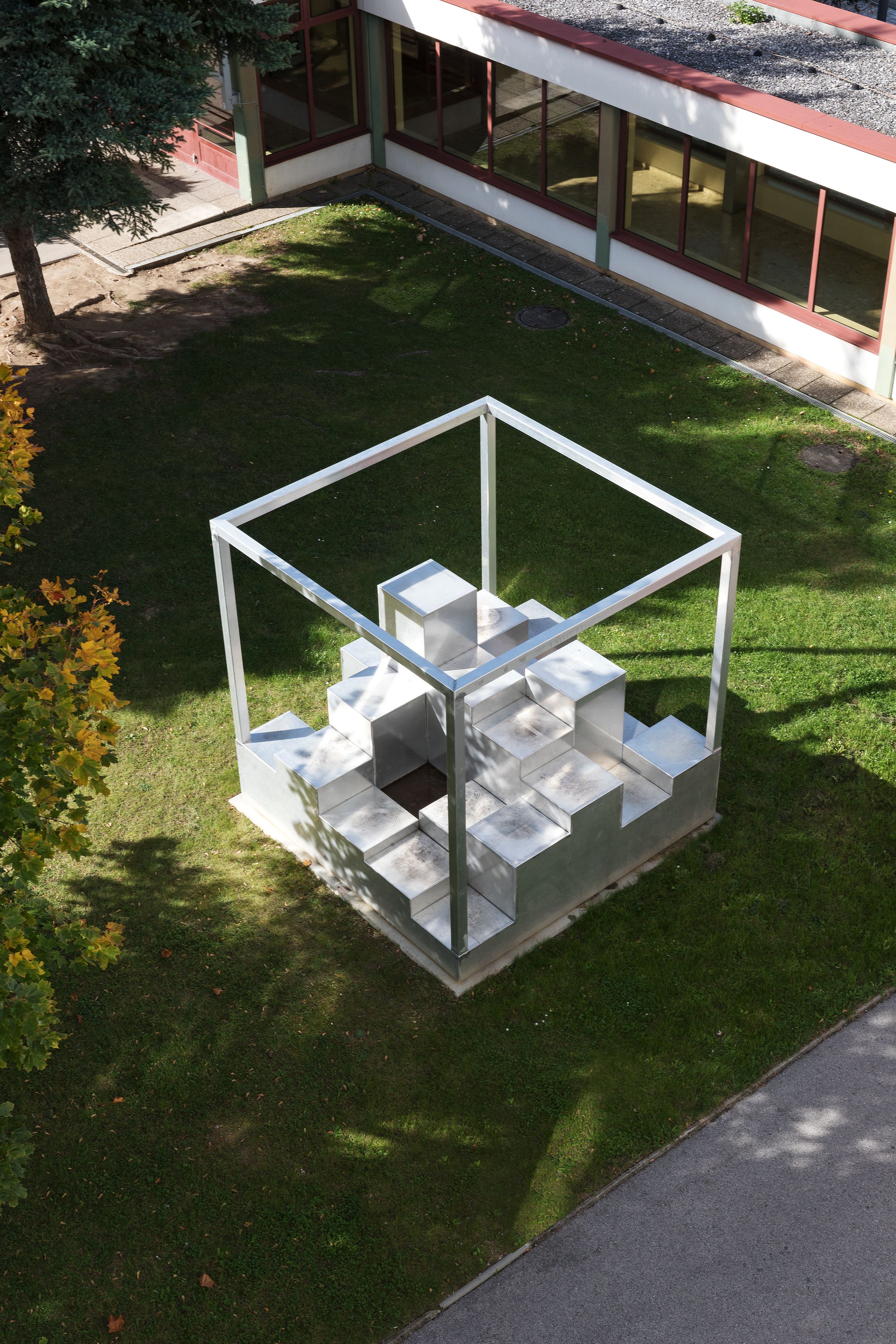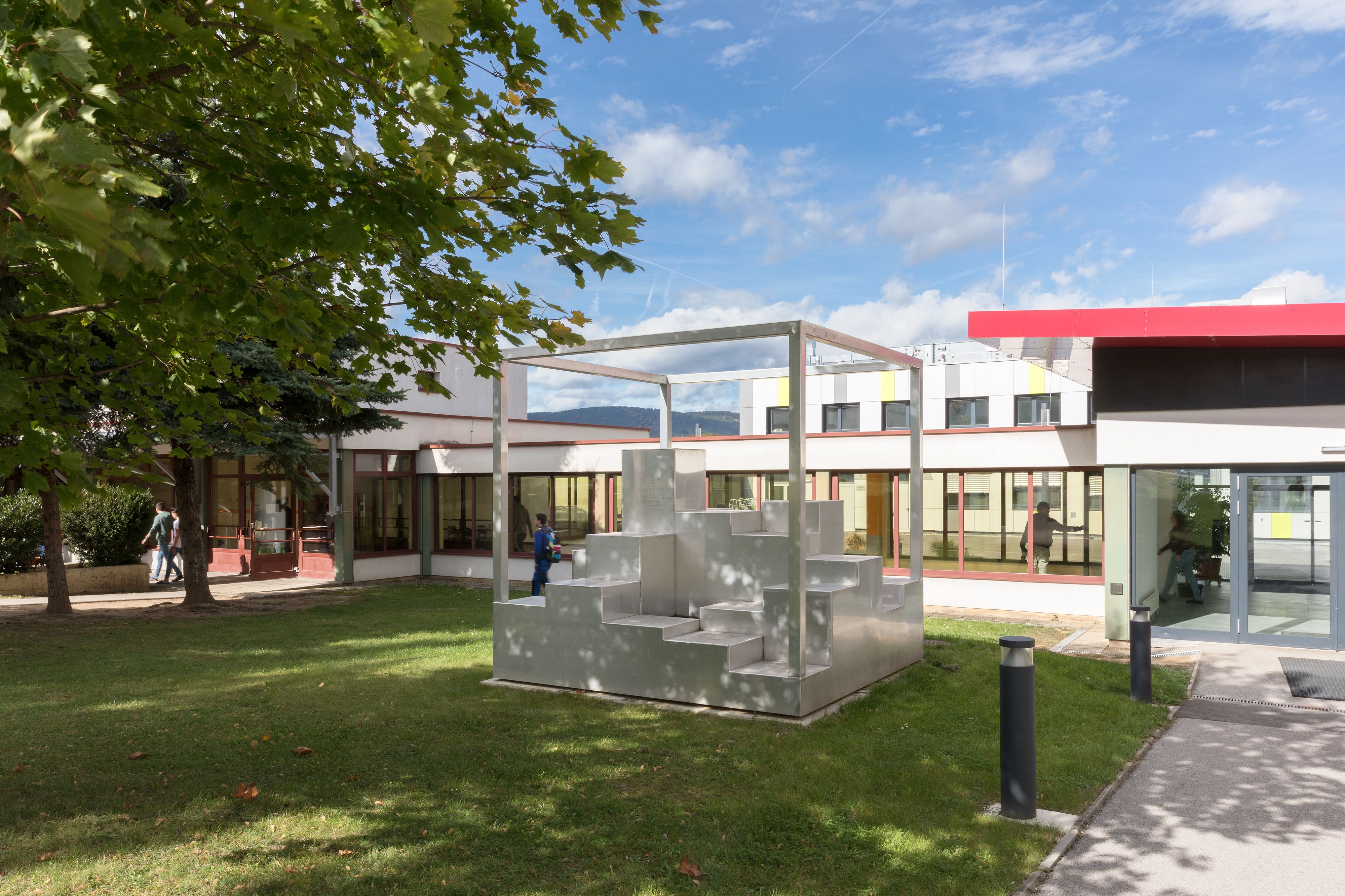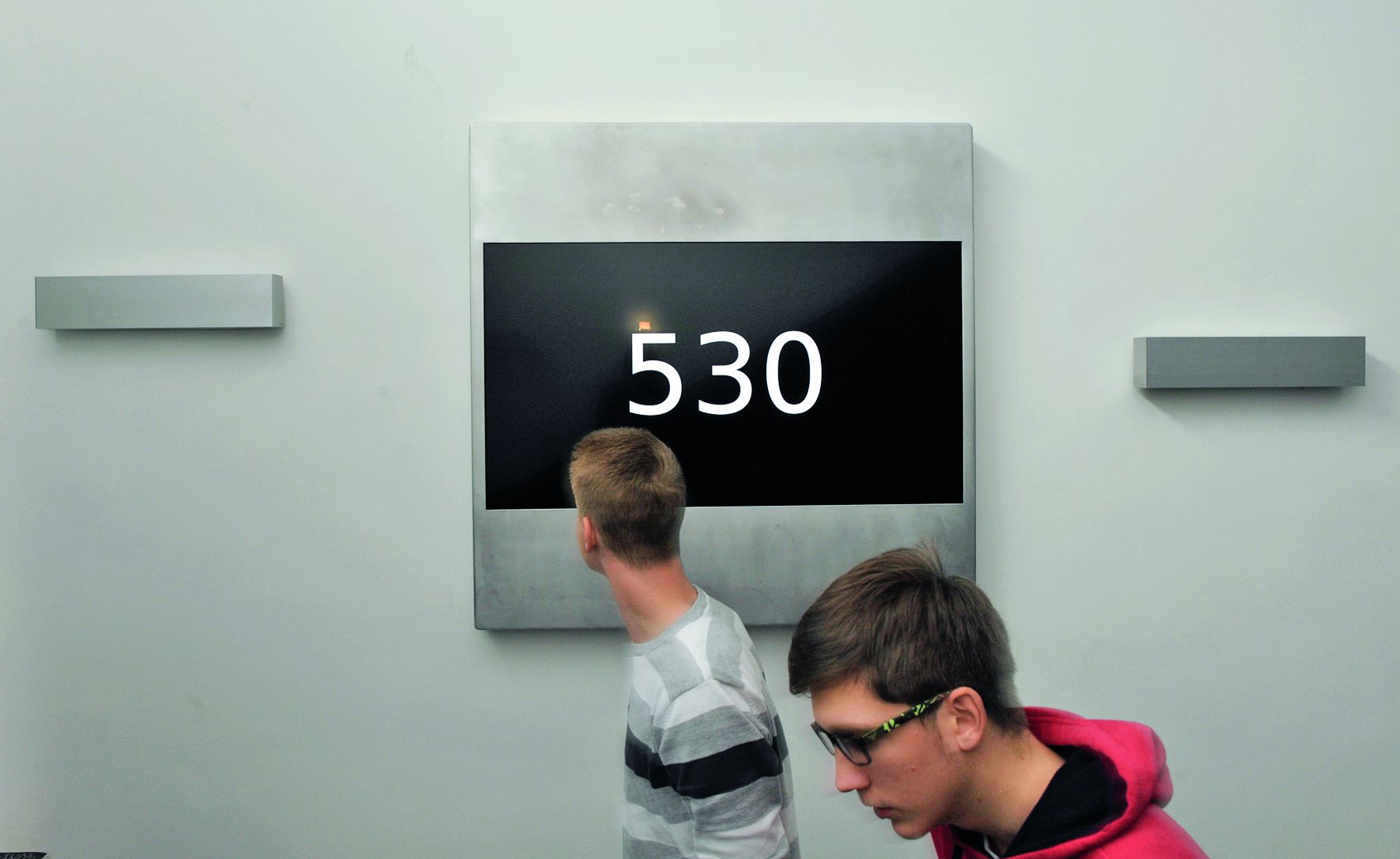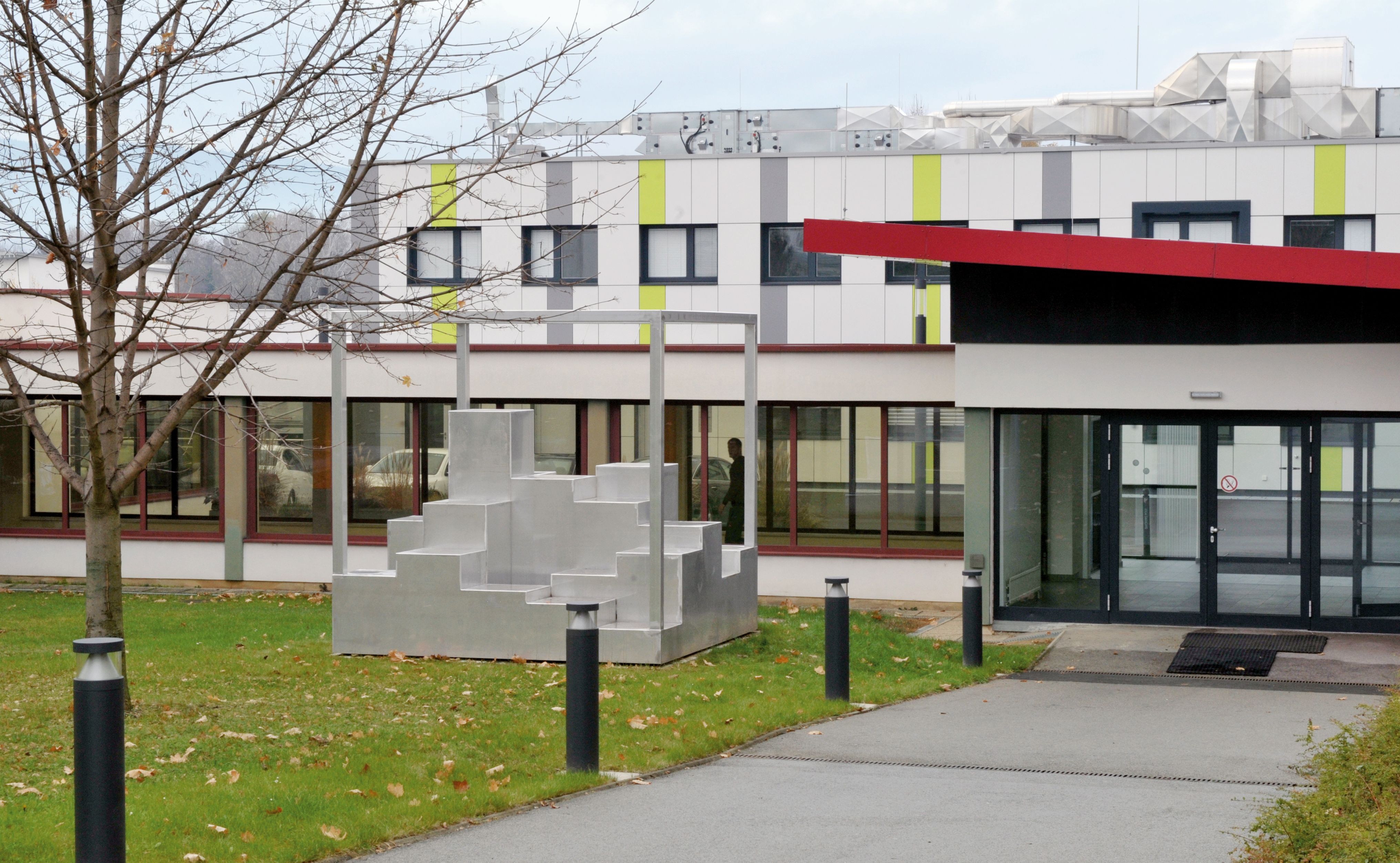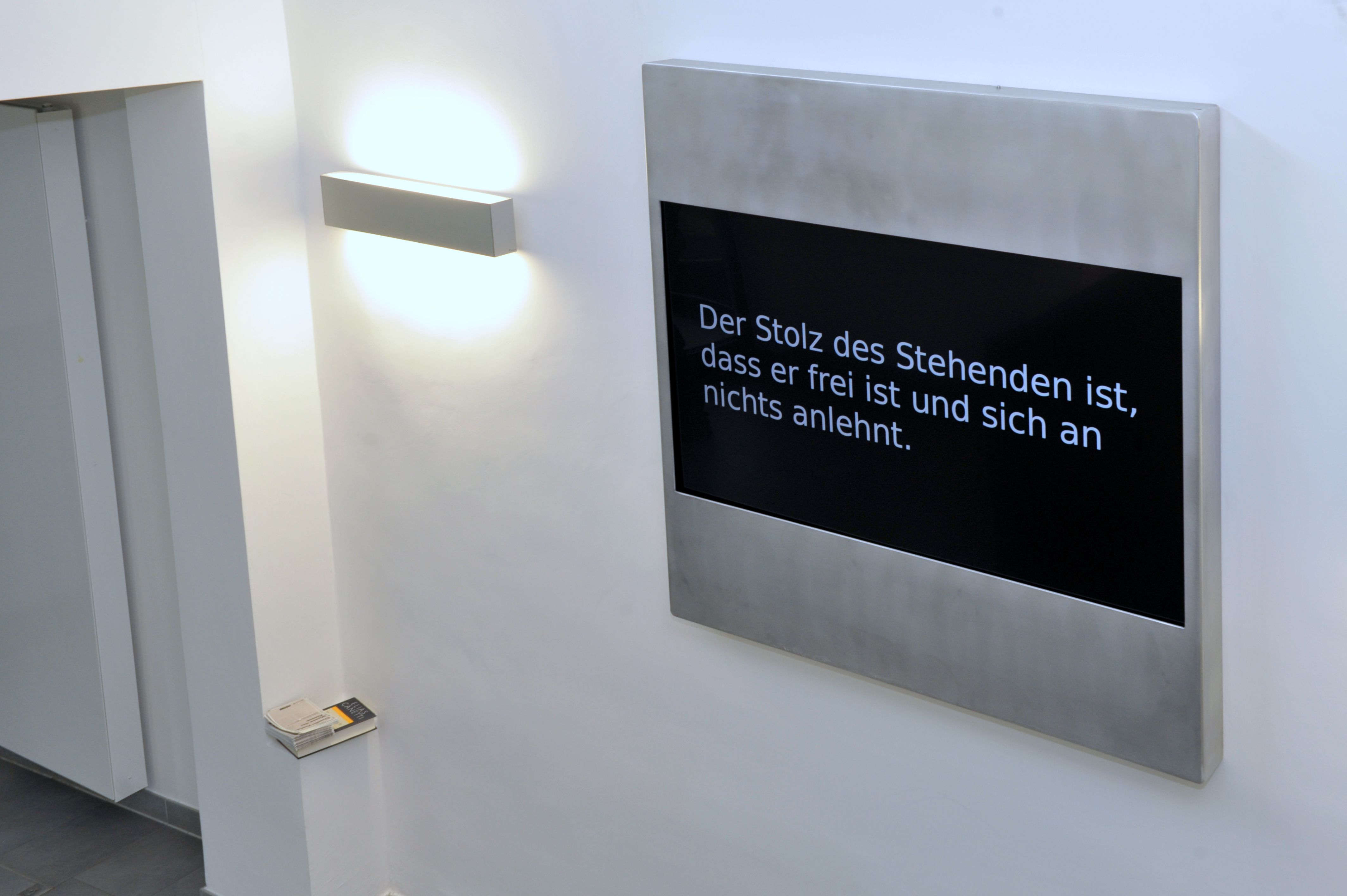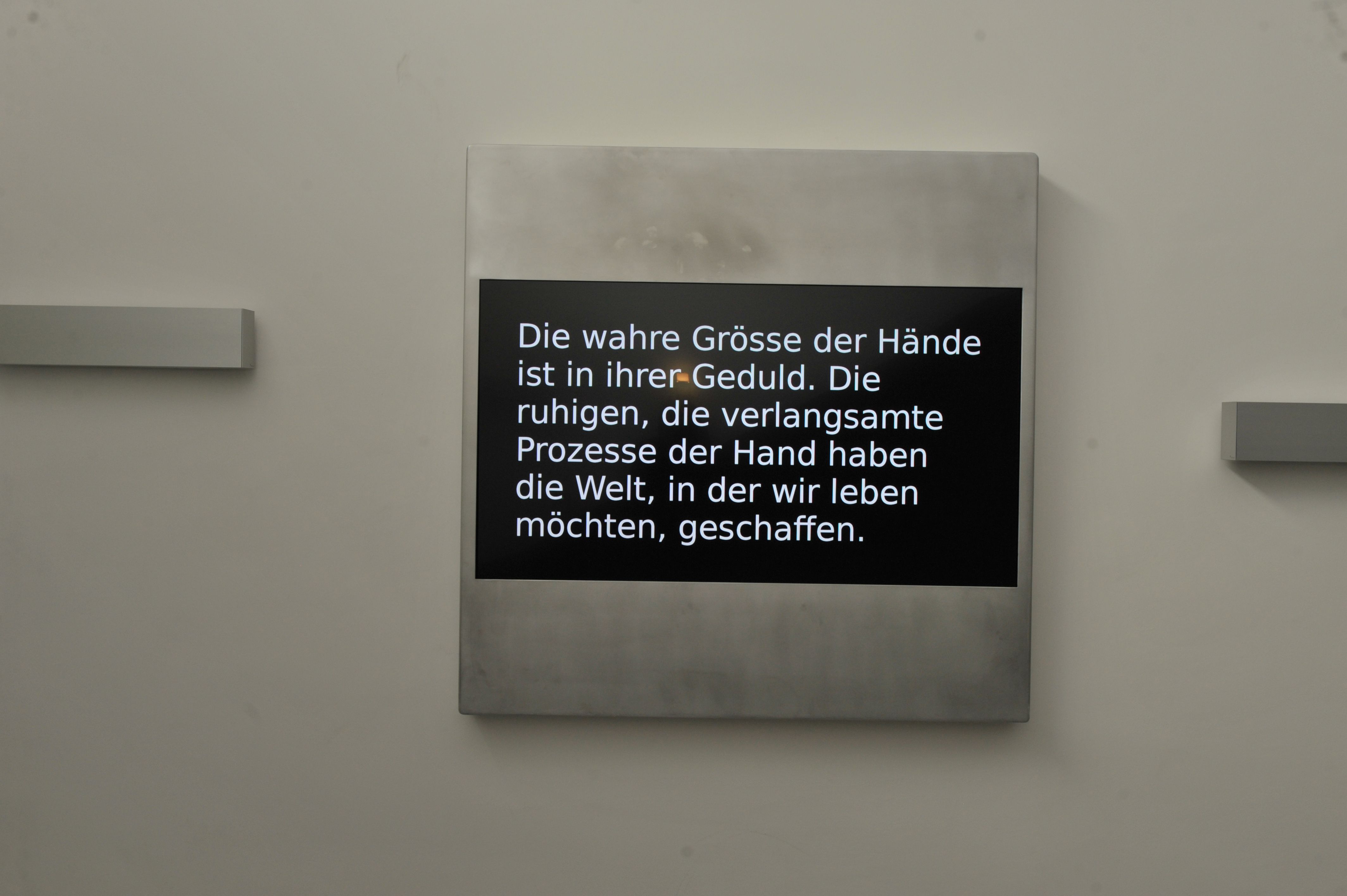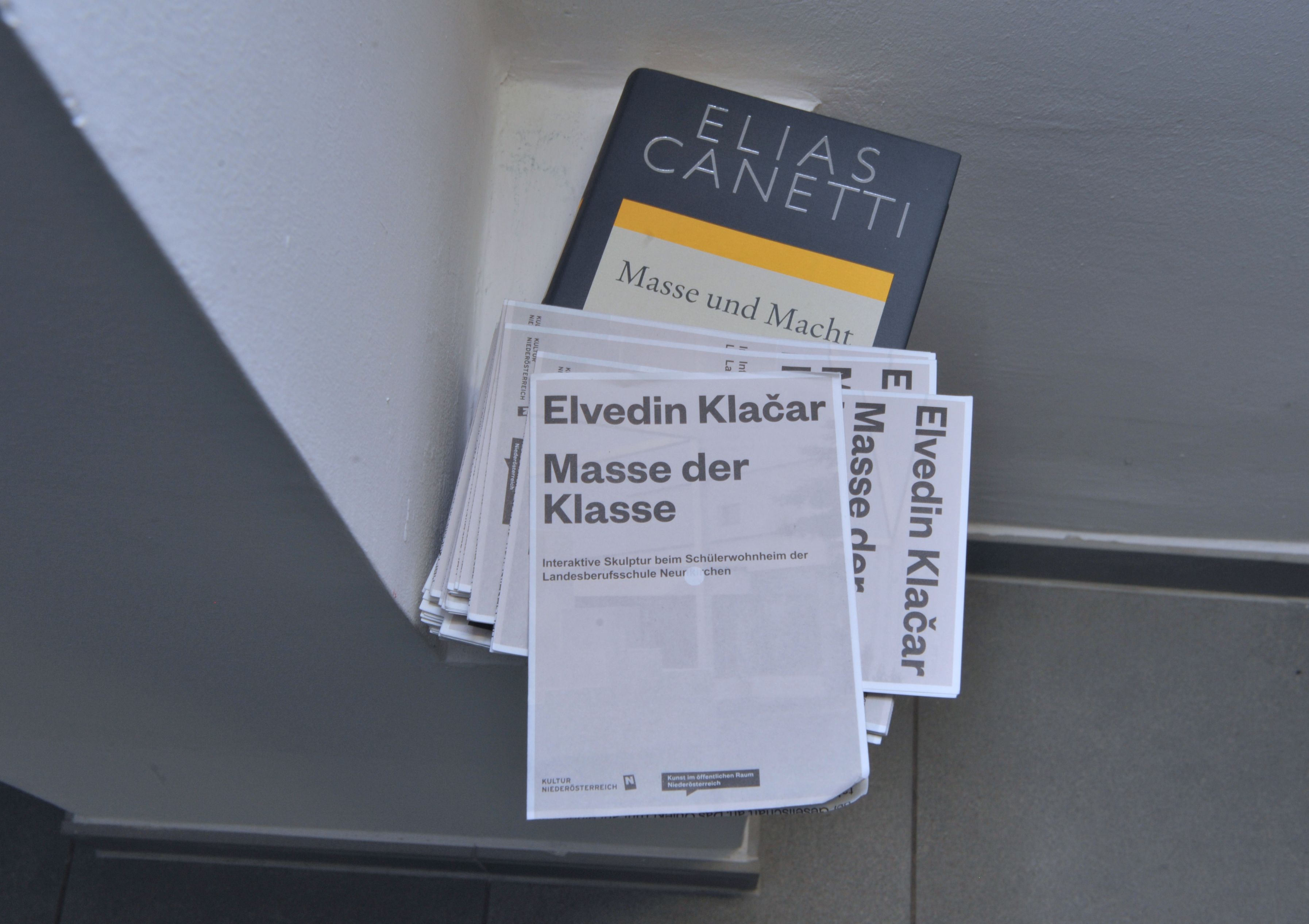Elvedin Klačar
:
Masse der Klasse (Mass of the Class)
Back
Information
Masse der Klasse (Mass of the Class) is the title of Elvedin Klačar’s interactive sculpture in the grassy courtyard of the Landesberufsschule (State Vocational School) in Neunkirchen. For his artistic experiment exploring the concept of mass, Klačar chose a special form that would encourage students and teachers alike to participate. Behind Masse der Klasse is also the obvious idea of mass as a class – in other words, the meaning of mass as bulk and as a large group of people. In his work, Klačar refers to the book Masse und Macht (published in English as Crowds and Power) from 1960, the well-known principal work by Elias Canetti. Based on his close study of mass movements in the 1920s, Canetti began to explore the questions of how power is constituted – especially power in totalitarian regimes – and why masses follow and obey this power. He described mass phenomena as the result of a dynamic that evolves in a moment when everyone can “get rid of their differences and feel equal.” (Elias Canetti)
Considerations like these form the ideational basis of Elvedin Klačar’s works. The basic shape of his sculpture on the grassy schoolyard is a cube measuring 3x3x3 meters with a frame defined by aluminum profiles. While the upper half of the cube is empty, the lower half is stacked with aluminum-covered blocks of different heights. The entire installation rests on an industrial scale hidden in the foundations that can measure up to 5,000 kilograms. Klačar defined 40 weight units between 0 and 150 kilograms and assigned them different quotes from Crowds and Power. These appear on a digital display in the lower part of the staircase in the student dormitory when more than one person is on the sculpture – in other words, when a mass is beginning to form. There can be no doubt that this sculpture represents a true physical mass. But its main characteristic is that it is able to grow beyond its physical purpose, beyond its function as a place to sit and as an abstract sculpture, and beyond its meaning as an artistic signifier for a school that primarily teaches metalwork and metal engineering, transforming into a tool of research for studying Crowds and Power. The artist says that “the installation becomes a political object once people interact with it. The quotes not only confront the students with the meaning of power, but with the question of the role of the individual in a collective.” As part of the installation, Elvedin Klačar also left a copy of the book Crowds and Power in the school as a reference.
The public sphere is the ideal dynamic playing field for Klačar’s artistic range of thought and action. Like an anthropologist, he creates performative and sculptural works that refer to common experiences that accompany and define people’s everyday lives. The artist contributes to artistic discourse through communication and action. What fascinates him about interactivity is the moment in which we decide to do something, or not to do it. Power, social behavior, and social systems are thus key themes in his work. By observing and communicating, Elvedin Klačar not only lets people interact; his experiments also take him in many directions that often include (as can be seen in Neunkirchen) a playful approach.
(Cornelia Offergeld, Translation: Michelle Miles)
Images (11)
